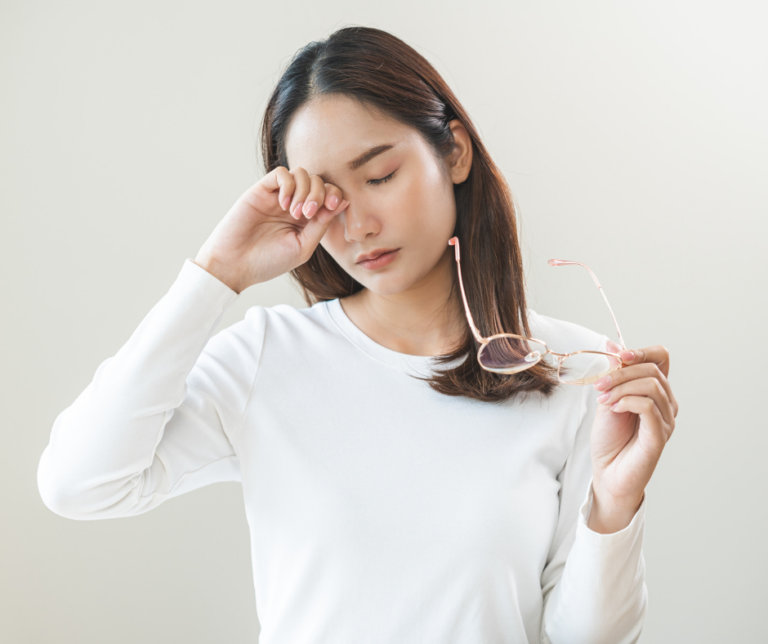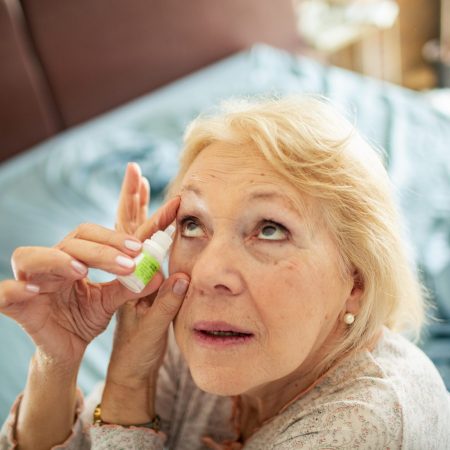The Truth About Dry Eye: Symptoms, Causes, and Research Opportunities
Do you ever experience scratchy, irritated feeling in your eyes? Does your vision or noticed your vision become blurry after staring at a screen for too long? If so, you are not alone. These are common signs of dry eye syndrome, a condition that affects millions of people worldwide. But what exactly is dry eye, why does it develop, and how can it be managed? Let’s explore the symptoms, causes, and the exciting research developments for adults with dry eye.

What is Dry Eye?
Dry eye occurs when your eyes and eyelids don’t produce enough tears or when the tears they do produce are low quality and are unable to keep your eyes lubricated. Tears are essential for maintaining healthy eyes, as they provide moisture, nutrients, and protection against irritants. Dry eye occurs when your eyes and eyelids either produce low quality tears or an inadequate amount of tears to sufficiently to keep your eyes lubricated. Tears are essential for maintaining healthy eyes; as they provide moisture, nutrients, and protection against irritants. Tears serve as a type of protection for your ocular surface.
Dry eye can be a temporary inconvenience or a chronic condition that significantly impacts a person’s vision and quality of life. Either way, it’s important to diagnose the root cause and determine treatments to alleviate symptoms to avoid further complications.
Symptoms of Dry Eye
The symptoms of dry eyes can range from mild discomfort to severe irritation. Common signs and symptoms include:
- A scratchy or gritty sensation, as if something is in your eye.
- Redness or irritation.
- Sensitivity to light.
- Blurred vision, especially after prolonged screen time.
- Watery eyes, which might sound surprising but is the result of your eyes over producing low quality tears to try and compensate for dry eye.
If you’re experiencing any of these symptoms, it’s worth speaking to an eye care professional to determine the underlying cause and if dry eye is the culprit.

What Causes Dry Eye?
Dry eye can result from a variety of factors, including:
- Screen Time: Spending hours staring at digital devices reduces your blink rate, leading to tear evaporation.
- Aging: Tear production naturally decreases as we age, particularly for those over 50.
- Hormonal Changes: Women experiencing menopause or pregnancy are at higher risk due to hormonal fluctuations.
- Environment: Dry or windy climates, air conditioning, or heating can exacerbate symptoms.
- Medical Conditions: Certain autoimmune diseases, such as Sjögren’s syndrome, and medications like antihistamines or antidepressants can contribute to dry eye.
Understanding the cause of your dry eye is key to finding effective treatments.
How is Dry Eye Treated?
Treatment for dry eye depends on the severity and underlying cause. Common options include:
- Over-the-Counter Eye Drops: Artificial tears can provide quick relief for mild symptoms.
- Prescription Medications: Certain medications help reduce inflammation and stimulate tear production.
- Lifestyle Changes: Taking breaks during screen time, using a humidifier, and wearing protective eyewear outdoors can help.
- Advanced Therapies: Specialized treatments, such as tear duct plugs or light therapy, are available for more severe cases.

The Role of Research in Dry Eye Management
Dry eye is an area of active research, with new treatments and therapies being developed to improve outcomes for patients. Some promising areas of study include:
- Biologic Eye Drops: Innovations like serum-based drops aim to mimic natural tear components for better eye surface lubrication.
- Targeted Medications: Researchers are developing therapies that specifically address inflammation and tear production issues.
- Device-Based Therapies: Advances in technology, such as thermal pulsation devices, are offering non-invasive solutions to improve tear quality and flow.
How You Can Help Shape the Future of Dry Eye Care
Participating in clinical trials is a powerful way to contribute to dry eye research and get compensated for your time. By joining a clinical research study, you can help researchers test new therapies and expand our understanding of this complex condition.
At Ora, we’re at the forefront of ophthalmology research, offering patients the opportunity to be part of cutting-edge clinical studies. Explore our current trials to see if you qualify—and play a role in advancing treatments for dry eye and other eye conditions.
Protect Your Vision and Find Relief
Dry eye doesn’t have to be a constant struggle. By understanding the symptoms, addressing the causes, and exploring available treatments, you can take control of your eye health.
Stay connected to learn about future clinical trials or learn more about dry eye and other conditions here.
Want to Stay Informed About the Latest Blog Posts?
Sign up for updates and never miss a post! We’re excited to share more insights on eye health. Our next blog post will be released on the first Monday of every month.